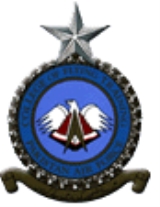
Sherdils
Encyclopedia
Sherdils is the aerobatics
display team of the Pakistan Air Force Academy
based at the PAF
Academy, Risalpur
, Pakistan
. The team flies nine K-8 Karakorum trainer aircraft and used to fly the T-37 "Tweety Bird"
. Its pilots are instructors from the PAF Academy's Basic Flying Training
(BFT) Wing.
, the aerobatics team of RAF College, Cranwell where Bahar had been on an exchange tour. It was decided to put up a brief show on graduation parades as a demonstration of the professional skills of Academy instructors.
After several trials of candidate instructors, a team was formed under the command of 1965 War hero, Wg Cdr Imtiaz A Bhatti. He was the Officer Commanding of the BFT wing at that time. Other formation members included Flt Lt Aamer Ali Sharieff, Flt Lt A Rahim Yusufzai and Flt Lt Niaz Nabi, the latter becoming a most durable master of the ‘slot’ position.
The initial performances of the team were highly successful. The "Tweety birds" performed at air shows for foreign dignitaries, including heads of state and military officers.
Initially, the team had no name. The personal call sign of the leaders also denoted the team; it flew as ‘Sherdils’ for the first time on 19 September 1974.
The Sherdils have transitioned from the T-37 which had virtually become their trademark, to the newer and more modern Hongdu K-8 "Karakorum" trainer jointly developed with China. The public debut was during PAF High Mark 2010 exercise in April 2010. Another public display using the K-8s was soon after, during the graduation ceremony at PAF Risalpur in May 2010.
Aerobatics
Aerobatics is the practice of flying maneuvers involving aircraft attitudes that are not used in normal flight. Aerobatics are performed in airplanes and gliders for training, recreation, entertainment and sport...
display team of the Pakistan Air Force Academy
Pakistan Air Force Academy
"RAF Risalpur", "Risalpur Airbase/Airfield" & "Pakistan Air Force/PAF Base Risalpur" redirects here.The Pakistan Air Force Academy also known as PAFA, is an accredited co-educational four-year college for the undergraduate education of officer candidates for the Pakistan Air Force...
based at the PAF
Pakistan Air Force
The Pakistan Air Force is the leading air arm of the Pakistan Armed Forces and is primarily tasked with the aerial defence of Pakistan with a secondary role of providing air support to the Pakistan Army and the Pakistan Navy. The PAF also has a tertiary role of providing strategic air transport...
Academy, Risalpur
Risalpur
Risalpur is a city in Nowshera District, Khyber-Pakhtunkhwa, Pakistan, on the Nowshera-Mardan Road. It is nearly 45 km from Peshawar and 15 km from Mardan and is located at 34°4'52N 71°58'21E. In a basin some 1014 feet above sea level, it is bounded on the south and west by the Kabul and...
, Pakistan
Pakistan
Pakistan , officially the Islamic Republic of Pakistan is a sovereign state in South Asia. It has a coastline along the Arabian Sea and the Gulf of Oman in the south and is bordered by Afghanistan and Iran in the west, India in the east and China in the far northeast. In the north, Tajikistan...
. The team flies nine K-8 Karakorum trainer aircraft and used to fly the T-37 "Tweety Bird"
Cessna T-37
The Cessna T-37 Tweet is a small, economical twin-engine jet trainer-attack type aircraft which flew for decades as a primary trainer for the United States Air Force and in the air forces of several other nations...
. Its pilots are instructors from the PAF Academy's Basic Flying Training
College of Flying Training
The College of Flying Training is located at Risalpur, Nowshera District, Khyber-Pakhtunkhwa, Pakistan. The College is a constituent unit of the Pakistan Air Force Academy.-External links:*...
(BFT) Wing.
History
The team was officially formed on 17 August 1972 as a result of efforts by an Academy instructor, Sqn Ldr Bahar-ul-haq. The team was formed on the lines of Red PelicansRed Pelicans
The Red Pelicans, were the official aerobatics display flyers of the Royal Air Force before the Red Arrows took over the role in 1965. The Red Pelicans flew the BAC Jet Provost aircraft.-History:...
, the aerobatics team of RAF College, Cranwell where Bahar had been on an exchange tour. It was decided to put up a brief show on graduation parades as a demonstration of the professional skills of Academy instructors.
After several trials of candidate instructors, a team was formed under the command of 1965 War hero, Wg Cdr Imtiaz A Bhatti. He was the Officer Commanding of the BFT wing at that time. Other formation members included Flt Lt Aamer Ali Sharieff, Flt Lt A Rahim Yusufzai and Flt Lt Niaz Nabi, the latter becoming a most durable master of the ‘slot’ position.
The initial performances of the team were highly successful. The "Tweety birds" performed at air shows for foreign dignitaries, including heads of state and military officers.
Initially, the team had no name. The personal call sign of the leaders also denoted the team; it flew as ‘Sherdils’ for the first time on 19 September 1974.
The Sherdils have transitioned from the T-37 which had virtually become their trademark, to the newer and more modern Hongdu K-8 "Karakorum" trainer jointly developed with China. The public debut was during PAF High Mark 2010 exercise in April 2010. Another public display using the K-8s was soon after, during the graduation ceremony at PAF Risalpur in May 2010.

